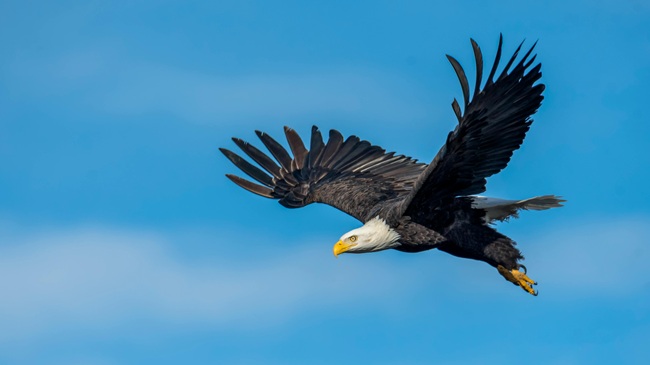
Ever since people have existed, we have watched birds fly and wondered how they did it, wondering also if we too could fly. Only in the 20th century have people been able to build machines that can fly and this article explains how carefully studying birds helped achieve that goal.
The birds however do a better job in many ways than we do with our airplanes. If a bird is just gliding (or “soaring”), that is, not flapping its wings, it flies in pretty much the same way that an airplane flies. The wings push air down, so by Newton’s third law the air must push them up. Partly, the push comes from the angle the wings are held at and partly from the curvature of the wings. The air travels faster above the bird’s wing than it does below, and this makes the pressure lower above the wing.
But birds are more complicated than that, and so are airplanes. Some energy source is required to overcome the unavoidable drag of pushing through the air, to lift the bird or airplane up to flying height, and to give the bird or airplane kinetic energy. Airplanes use propellers or jet engines. Birds use strong muscles in their breasts to flap their wings. In addition, bird wings are hinged, while airplane wings are rigid and fixed.
The bird uses its strong muscles to push its wings downwards, pushing air downwards, generating lift, and, if the wings are angled properly, also thrust. The big problem then becomes not pushing air back upwards when the bird moves its wings up for the return stroke. This is accomplished with the hinged wings. On the downstroke, the wing is fully extended, offering its full surface area for pushing air downwards. On the upstroke, the wing folds up, presenting less area. It is a lot like rowing with oars. The oar pushes the water behind the boat on the power stroke, but must be removed from the water and, ideally, turned 90 degrees so it does not push air or water forwards on the return stroke.
Birds also have a lot of adaptations for flight. Their bones are hollow and light, but strong and they have light feathers which catch the air. They can fold up their wings when they are not in use. Their lungs are extra efficient at extracting oxygen from the air (we huff and puff when running, and flying is much harder!). Birds also eat huge amounts of high-energy food, relative to their body weight.
Provided by the University of Illinois
Related Articles & Free Email Newsletter Sign Up
10 Reasons to Own a Green Cheeked Conure
Easy Ways to Bond With Your Bird




Comment here